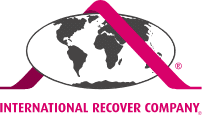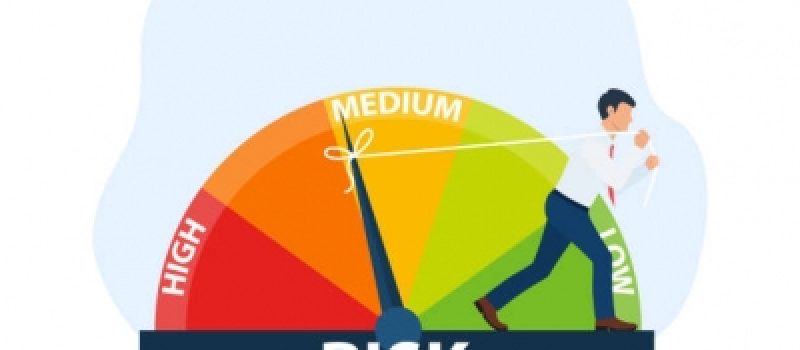It's no surprise that starting a new business or running a company involves a certain degree of risk. However, the term "business risk" refers specifically to anything that could threaten a company's financial health or lead to its insolvency.
Business risks can arise from a variety of sources, internal or external. It is therefore important to understand where and how your business may be most vulnerable to such dangers.
Companies face a variety of business risks that can threaten their ability to achieve their objectives if these risks are not monitored and managed properly. Business risks include financial risks, reputational risks and even compliance and cybersecurity risks.
All of these risks can have a serious impact on your company's strategic plans if you don't take steps to mitigate them. According to security expert Shon Harris, once a business risk has been identified, an organization has four options: transfer it, avoid it, reduce it, or accept it.
Trying to avoid all risks at all costs can harm the growth of your business. Some degree of calculated risk is necessary. Entrepreneurship means taking risks that allow you to stand out in the market, surpass your competitors, gain customers and make profits.
Types of Business Risks
Here are several types of business risks to look for when assessing your company's position:
1. Financial risk
Financial risks can arise when your business has little or no financial planning and cash management. Market fluctuations can threaten the financial situation of your business.
Here are some types of financial risks for your business:
- Foreign exchange risk: Your business may be exposed to foreign exchange risks in international business transactions. The value of a foreign currency may depreciate unexpectedly.
- Default Risk: Default risk is a major component of credit risk that reflects the likelihood that your business will not pay its financial obligations on time.
- Liquidity Risk: Your business faces liquidity risk when it cannot quickly convert its assets into cash.
2. Strategic risk
Strategic risk occurs when your company's business strategy is flawed or its leaders do not follow a business strategy at all. Your business may fail to achieve its goals due to strategic risks. Businesses have a competitive advantage when they can adopt the right strategy and implement it successfully. Strategic risk strongly impacts the achievement of your company's objectives.
3. Operational risk
Anything that disrupts your business's ability to operate, temporarily or indefinitely, is operational risk. The risk can be as unpredictable as a natural disaster or a burglary. It can take many forms, including employee errors, technology failures, external fraud (theft or vandalism). Although most of these threats are beyond your control, your business can still take steps to prepare for them.
4. Compliance risk
Compliance risk arises from failure to comply with laws or other regulations. If you violate the law, your company may be sanctioned or its credibility damaged. The impact of non-compliance risk is significant for certain highly regulated sectors.
5. Security risk
Your business may be at security risk if it fails to create or follow cybersecurity strategies. Ineffective employee training, lack of software testing, and insufficient policies for security updates can all put your company's finances and reputation at risk.
Once you know the types of business risks that may apply to your business, it is important to have specific risk management processes and procedures in place that will monitor your customers, suppliers, partners and employees and help you to analyze or calculate your level of risk.
How to identify business risks?
Here is a list of steps you can take to identify risks to your business:
A. Analyze your business
You can perform a SWOT analysis to evaluate your business performance:
- Strengths: Identify the strengths of your business. List what you do best. You can also develop your strengths to protect yourself against business risks.
- Weaknesses: When you identify the weaknesses of your business, you can develop strategies to strengthen the business in these areas, which will have a long-term effect.
- Opportunities: You can conduct market research to learn more about your business's growth potential or other opportunities for improvement.
- Threats: You can review internal and external factors that could threaten the company's bottom line or its risks.
B. Investigate risks at all levels
After analyzing your core business, you can look for risks at all levels of the company. Anonymously surveying employees, from management to entry-level staff, can help you identify threats for each area of the business.
C. List the risks
You can create a record for each risk to learn about recurring threats to the company's reputation or profits. If your business faces the same risks repeatedly, you can create strategies that help protect the business from the threat.
How to minimize business risks?
Once you have identified the risks to your business, you can use the following strategies to minimize them, among other things:
- Hire a business risk consultant: You can hire a specialist to help you stabilize risk areas, calculate their probability and develop plans to address them.
- Develop a risk management strategy: After identifying risks, you can design a plan to mitigate current and future risks to your business.
- Make sure: You can contact an insurance broker and insure yourself for the various risks detected.
- Get help: Whether it is about finding out about the laws and regulations that impact your business, protecting yourself against cybercrime or implementing adequate financial and cash management, get support from professionals in the sector. Their advice and experience will be of great use to you for the development and security of your business.
In conclusion, every business faces business risks that can impact its bottom line and reputation. Once these risks are identified, risk management plans can help mitigate them. Commercial risk management must be an integral part of your company's sustainable development policy.




